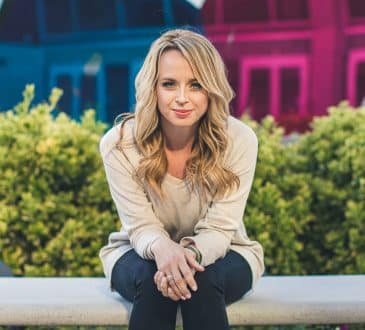Why Are Communication And Trust Once Again Topping The Employee Surveys?

Every year executives struggle to determine why their employees don’t trust the company, and why every year the employee survey says communication is the biggest problem facing employees. Teams are formed each spring to address these very problems, and every year trust and communication once again top the list.
Sample of employee feedback.
# |
Employee Survey Parameter |
% Favorably Rated |
| 1 | Communication | 46% |
| 2 | Career Development |
53% |
| 3 | Resources | 53% |
| 4 | Employee Engagement |
65% |
| 5 | Employee Enablement |
67% |
| 6 | Reward and Recognition |
68% |
| 7 | Work, Structure & Process |
69% |
| 8 | Leadership | 72% |
| 9 | Performance Management | 72% |
| 10 | Employee Care |
73% |
| 11 | Teamwork & Collaboration |
75% |
| 12 | Quality & Customer Focus |
80% |
| 13 | Authority & Empowerment | 82% |
| 14 | Business Conduct |
84% |
| 15 | Support for Innovation |
89% |
Trust and communication are often one and the same, and both essential as we explore the use of agile methods. Trust is dependent on communication, and communication is dependent on trust. They are linked and inseparable due to bonds that form the bases of trust.
Organizational communication and trust are put to test when they transform. Business transformation trends change all the time and it is hard to predict which trends will gain business leaders’ mindshare in coming years let alone decades. Agile and lean, however, appear to be gaining wider adoption across industries. Large corporations picked up lean in the 1990s, and agile became the new key word in 2000s with the release of the agile manifesto.
As leaders, ready to make the move to agility, our expectations can be high. We focus on the success stories of nimble, agile start-ups and the flexibility of the little guys as they capture new markets and new technological advantages. We see them poaching our customers and read the benchmarks published by consulting firms touting a sixty percent success rate with agile projects, and at some point make the decision to scrap our processes and make the plunge into the agile pool. We don’t talk about the forty percent failure rate and wonder why agile has such a high rate of failure.
Those that succeed must be doing something different, than those that fail. Finding true failures sometimes helps in identifying ways to design success. Some of the key factors in agility based project failures, according to Chow and Cao’s 2008 study, are tied to inadequacies in leadership, trust, team work, and skill sets, as well as cultural alignment.
Successful organizations are different. Firms that successfully make the change to agile and lean methods understand that the methods of agility and lean, while well documented and widely published, require preparation before implementation. What makes agile and lean practitioners successful has less to do with their methods, and more to do with how well their leaders prepare the culture of the organization to support the methods.
Agility programs are less about the process of engineering and all about the relationships we build. Executives have long known this. The most successful executives understand they need to spend at least seventy percent of their time building strong relationships and only about thirty percent getting work done if they want to have a good and long lasting impact on the way in which work gets done. Relationships, successful executives and sales people will tell you, are key to building strong teams and high levels of trust. The strong working relationships that are necessary to create agility and flexibility in the work team are built upon communication and trust. Building a culture where relationships between engineering teams and the business, along with a solid understanding of customer desires, creates a culture where agile and lean teams flourish. Relationships are the key to driving organizational results but to build a relationship we have to be able to connect with one another on a personal level.
The right horse for the right race is an axiom meaning the leaders must carefully choose the right style for the right goals. Leadership style, personality, and goals must align with the desired culture of the organization. Steve Jobs built a culture of creativity and cutting edge technologies. Jack Welch created a culture that demanded quality and accountability. Bill Gates grew an empire around a culture of rapid delivery of new products that people want to use. While you may not agree with these leaders and their styles, it is a pretty well settled argument that their personality and leadership style were aligned with and for that matter drove the culture of the organization.
When an organization sets forth to build a culture around agility and lean processing it is critically important to make an assessment of the goals of the organization. Is it your desire to embrace ambiguity and explore the process of discovery? To keep running with the earlier analogy, are you are willing to share the decision making with the horse as well as the rider? Can your management team accept the need to drop the old ways of planning in detail and let go of steps that are presented more as checks and balances and not truly adding value to the customer?
If you said yes, then you are likely looking to build a culture capable of supporting agile methods. The next challenge may be consistency across the organizational roster. Building a culture that runs agile requires the reinforcement of the proper behaviors. Agile and lean methods work best in a culture that creates a semblance of servant leadership as the way in which work gets done. Employees need to be connected with their team in a way that creates a desire to serve the team to which they identify. They must feel a membership with the team that causes a desire to serve and lead when the need arises.
Leaders within the team, while still leading, focus on the needs of the team and the team’s capability to meet the priorities and goals of the larger organization. It is the duty of leaders to provide truly transformational leadership providing the vision, mission, and motivation. Transformational leaders have the ability and foresight to provide the bright light on the horizon that will catch the employees’ eye and lead them irresistibly in the direction he or she wishes the company to move. A company, if we remember our management 101 course, is no more and no less successful than the willingness of the employees to follow.
According to Stone, Russell, and Patterson, transformational and servant leaders are analogous in their people oriented leadership characteristics (2004). They care for the employees’ needs as a whole person and provide them with the ability and desire to care about the things that the leaders desire. They provide what Fabiannson called a home feeling (2007). That is to say a place in which they feel safe and able to be real, be their true self, or a place in which they feel they can take a risk without the fear of retribution or ridicule. The feeling that one can truly act as a real person and know that the support is there if they fail allows the employee to step forward and take a risk, to take the lead and not feel the need to always be a follower. This ability to step forward when the need arises builds in the culture the ability for distributed leadership to take hold. Building a culture layered with distributed leaders and committed team members is essential to effectively deploying an organization that is agile.
Leadership is not, therefore, so much a role as a way in which people within a process or project act or interact. In the three essential characteristic leadership forms of servant, transformation, and distributed leadership, each requires a great amount of trust among actors as well as transparency and consistency within the organization. Leadership may even be described as the interaction of dependency in which people find themselves. More so, it may be described as the reciprocation of dependency as a depth of essential knowledge moves from one team member to another due to the progression of the project.
How do we remove communications and trust from topping the employee surveys? The authors of this article are convinced transformative leadership is the key. Whether your organization is new or familiar with the lean and agile concepts, involved leadership that creates relationships within the teams not only improves communications and trust but also dramatically increases the successes of agile and lean transformations.
For more information read Agile Readiness by the authors.
Agile Readiness is designed to provide guidance to the manager or business leader in establishing a successful environment to enable fast moving agile and lean project methods focused on business systems transformation. The struggle that managers and executives face is how to make agile and lean methods successful when working beyond software development; this book uses simple ground floor experiences to illustrate the practices and behaviors necessary for success. The reader will discover organizational strategies that build strong teams, an environment of trust, and project selection and planning strategies to create an environment of enablement in which agile and lean teams thrive.
For further details, please see www.gowerpublishing.com/isbn/9781472417435
**********
References:
Chow, T., & Cao, D. B. (2008). A survey study of critical success factors in agile software projects. Journal of Systems and Software, 81(6), 961-971. DOI: 10.1016/j.jss.2007.08.020
Fabiansson, C. (2007). Young people’s perception of being safe- globally & locally. Social Indicators Research, 80, 31-49. doi: 10.1007/s11205-006-9020-3
Stone, A. G., Russell, R. F., & Patterson, K. (2004). Transformational versus servant leadership: A difference in leader focus. Leadership & Organization Development Journal, 25(4), 349-361. DOI: 10.1108/01437730410538671.
Written by Thomas P. Wise and Reuben Daniel
Bring the best of the CEOWORLD magazine's global journalism to audiences in the United States and around the world. - Add CEOWORLD magazine to your Google News feed.
Follow CEOWORLD magazine headlines on: Google News, LinkedIn, Twitter, and Facebook.
Copyright 2025 The CEOWORLD magazine. All rights reserved. This material (and any extract from it) must not be copied, redistributed or placed on any website, without CEOWORLD magazine' prior written consent. For media queries, please contact: info@ceoworld.biz













